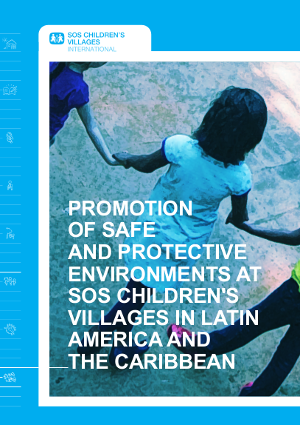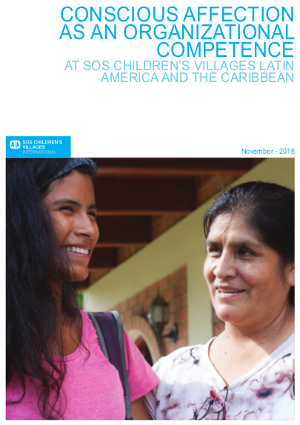“Promotion of safe and protective environments” and “Conscious Affectivity as Professional Competence”: two guides created for SOS Children’s Villages (Aldeas Infantiles SOS) in Latin America and the Caribbean
21 diciembre 2018
Etiquetas: AA - AGENDA ACTUAL, abuso, afectividad, derechos del niño, entornos seguros y protectores, In English, libros, nuestras publicaciones, protección, publicaciones, sensibilización, violencia
Developing in environments that provide and ensure protection, as well as in spaces that include their particularities and allow them to grow in an integral manner with warm and affectionate coexistence are vital rights for children, adolescents and the youth. That is why protective environments are the main condition for the child’s full development and for the full implementation of children’s rights in every area of their lives. Any organization or institution working with children (alternative care centres, educational centres, schools, hospitals…) should ensure the promotion of safe environments to ensure child care and protection.
 The manual Promotion of safe and protective environments at SOS Children’s Villages in Latin America and the Caribbean has been created by Espirales CI for SOS Children´s Villages Regional Office (click here to read the original in Spanish, La promoción de entornos seguros y protectores en Aldeas Infantiles SOS en América Latina y el Caribe). It has been developed to create an evaluation system of indicators to know if an environment is a protective environment or not. It can be used to evaluate the environments in which children are already living or to design new environments. And it is based on four levels:
The manual Promotion of safe and protective environments at SOS Children’s Villages in Latin America and the Caribbean has been created by Espirales CI for SOS Children´s Villages Regional Office (click here to read the original in Spanish, La promoción de entornos seguros y protectores en Aldeas Infantiles SOS en América Latina y el Caribe). It has been developed to create an evaluation system of indicators to know if an environment is a protective environment or not. It can be used to evaluate the environments in which children are already living or to design new environments. And it is based on four levels:
- Level 1: a protective and safe physical environment.
- Level 2: a protective and safe emotional environment.
- Level 3: the team, conscious adults that provide and maintain the protective and safe environment.
- Level 4: the prominence of the people living in the environment, including the prominence of children and young people.
But an environment will never be a protective environment if it is not a warm and affective environment. And the duty of creating this warmth belongs to adults in charge of children: the team. So, to ensure the level 3 of protective environments we need to promote the Conscious Affectivity as a Professional Competence. Any professional working with people, specially working with people who are suffering and over all, children who are suffering, need to be affective with them to make them feel safe and cared for. In this way they will recover integrally, and, talking about children, we will ensure their best development. Conscious affectivity is a professional competence and part of the professional duties working in any protection area.
 The manual Conscious affection as an organizacional competence at SOS Children´s Villages in Latin America and the Caribbean is a guide to promote conscious affectivity as professional competence in any institution or organization that works with children (click here to read the original in Spanish, La afectividad consciente como competencia organizacional en Aldeas Infantiles SOS América Latina y el Caribe). The competence is developed in five abilities:
The manual Conscious affection as an organizacional competence at SOS Children´s Villages in Latin America and the Caribbean is a guide to promote conscious affectivity as professional competence in any institution or organization that works with children (click here to read the original in Spanish, La afectividad consciente como competencia organizacional en Aldeas Infantiles SOS América Latina y el Caribe). The competence is developed in five abilities:
- Affection that is expressed in a way that it can be perceived and received by each person, child or adult.
- The ability to create positive affection bonds and to keep consciousness regarding the already created affective bonds.
- A conscious care of planning and development of all phases of the intervention process, with special attention to beginnings and endings.
- A conscious and respectful look at the person one works with.
- Addressing situations of conflict from a positive discipline perspective.
Both guides have been a long process of systematization of two key concepts from the child protection perspective. It is not only necessary to understand the importance of the ideas, it is necessary to give tools, indicators and evaluation processes in order to facilitate their implementation.
We want to thank SOS Children´s Villages Latin America and the Caribbean Regional Office, Child Protection Regional Network and the Human Resources Regional Network for their confidence in our work and their essential contribution to these two strategic guides.
We hope that these guides will be interesting and useful for any organization, institution or professional working with people who need to be safe and cared for.


